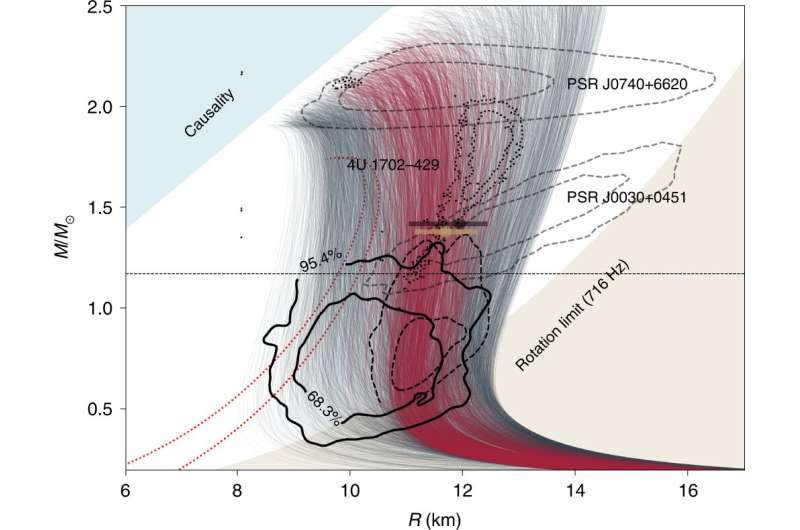October 25, 2022 report
Neutron star HESS J1731-347 may be a 'strange' star

Researchers at the Institut für Astronomie und Astrophysik in Germany have found evidence that suggests the extremely tiny neutron star, HESS J1731-347, may in fact be a "strange" star. In their paper published in the journal Nature Astronomy, Victor Doroshenko, Valery Suleimanov, Gerd Pühlhofer and Andrea Santangelo, describe a new approach to recalculate the distance of the star and their discovery of characteristics that suggest it could be of the strange star variety.
Prior research has proposed that a strange star should look much like a neutron star, but would have a much larger than normal proportion of strange quarks due to the breakdown of subatomic particles. Strange stars, theory suggests, would have equal proportions of strange, up and down quarks.
Currently, HESS J1731-347 is labeled a neutron star but is unusual because its mass is less than the sun. Theory has suggested neutron stars could never have a mass less than 1.1 times that of the sun. Consequently, some in the space science community have begun to wonder if HESS J1731-347 might be a strange star.
To find out, the researchers used a new approach to measure its distance. They used data from the Gaia mapping survey along with new information regarding a nearby star to recalculate the distance of the star from Earth. They found it to be much closer than prior research suggested. That finding demanded recalculations of its size and mass—they found the star to have a radius of 10.4 kilometers and its mass to be just 0.77 solar masses. That led to questions regarding whether it still qualifies as a neutron star. The researchers suggest that the star is not just exotic, but that it may qualify as a strange star.
More research is required before the space community can reach a consensus. If validated, HESS J1731-347 would be the first confirmed strange star and the theory behind its existence would also be confirmed. On the other hand, if it is found to not be a strange star, theories about neutron stars may have to be revisited.
More information: Victor Doroshenko et al, A strangely light neutron star within a supernova remnant, Nature Astronomy (2022). DOI: 10.1038/s41550-022-01800-1
Journal information: Nature Astronomy
© 2022 Science X Network





















